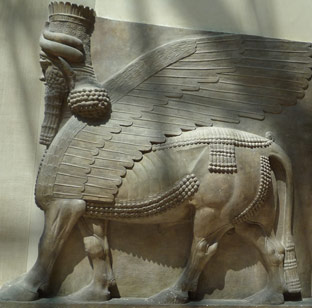[First posted in AWOL 31 May 2011, updated 3 March 2015]
Have you taken the AWOL User Survey?
Assyian Empire Builders: Governors, diplomats and soldiers in the service of Sargon II and Tiglath-pileser III, kings of Assyria
The correspondence between Sargon II, king of Assyria (721-705 BC), and his governors and magnates is the largest text corpus of this kind known from antiquity and provides insight into the mechanisms of communication between the top levels of authority in an ancient empire. His letters are supplemented by the smaller corpus of correspondence of his predecessor, Tiglath-pileser III (744-727 BC). This website presents these letters together with resources and materials for their study and on their historical and cultural context.
Web browser settings
If your browser has problems displaying the special transliteration characters such as Š and š (Shin), Ṣ and ṣ (Sade), Ṭ and ṭ (Tet) you may want to download Steve Tinney's Ungkam font for Mac, Windows, or Linux. If you're still having trouble viewing these characters, then you'll need to set the character encoding on your browser correctly.
- On Firefox, go to the Character Encoding item on the View menu and choose Unicode (UTF-8).
- On Google Chrome, go to the Encoding item on the View menu and choose Unicode (UTF-8).
- On Internet Explorer, go to the Encoding item on the View menu and choose Unicode (UTF-8).
- On Safari, go to the Text Encoding item on the View menu and choose Unicode (UTF-8).
- Essentials
- Royal correspondence
- Eponym lists and chronicles
- Private legal documents
- Highlights
- Bibliography
- People, gods & places
- Technical terms
- External resources
- About the project
The five crucial edited volumes of this correspondence in the Assyrian and Babylonian dialects are:
In addition to the royal correspondence, our knowledge of the organisation of the Assyrian empire at that time owes much to the eponym lists and chronicles, a group of texts edited in this volume:
- S. Parpola, The Correspondence of Sargon II, Part I: Letters from Assyria and the West (State Archives of Assyria 1), Helsinki 1987
- G. B. Lanfranchi and S. Parpola, The Correspondence of Sargon II, Part II: Letters from the Northern and Northeastern Provinces (State Archives of Assyria 5), Helsinki 1990
- A. Fuchs and S. Parpola, The Correspondence of Sargon II, Part III: Letters from Babylonia and the Eastern Provinces (State Archives of Assyria 15), Helsinki 2001
- M. Dietrich, The Neo-Babylonian Correspondence of Sargon and Sennacherib (State Archives of Assyria 17), Helsinki 2003
- M. Luukko, The Correspondence of Tiglath-pileser III and Sargon II from Calah/Nimrud (State Archives of Assyria 19), Helsinki 2012
- A. R. Millard, The Eponyms of the Assyrian Empire 910-612 B.C. (State Archives of Assyria Studies 2), Helsinki 1994
Assyrian Empire Builders and Knowledge and Power are portals to State Archives of Assyria Online










 Stumble It!
Stumble It!

No comments:
Post a Comment